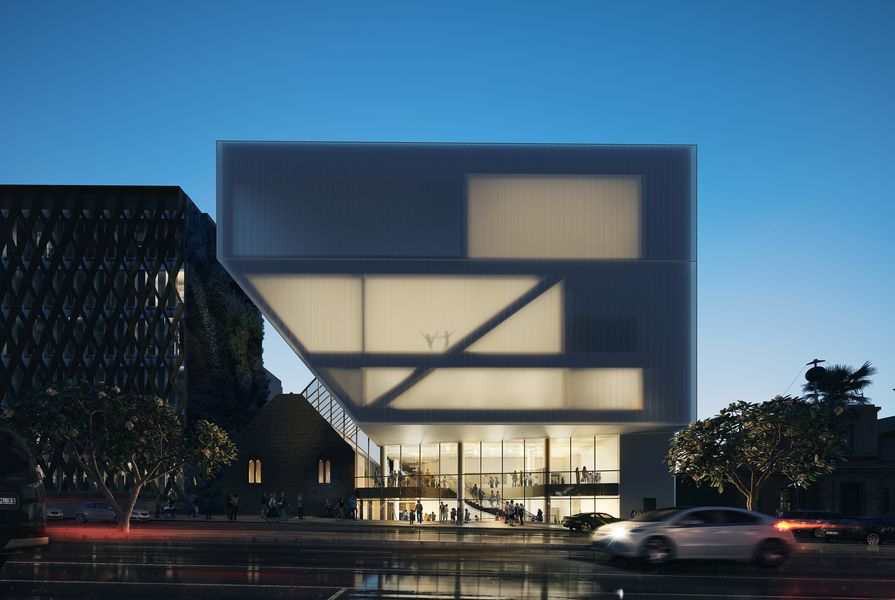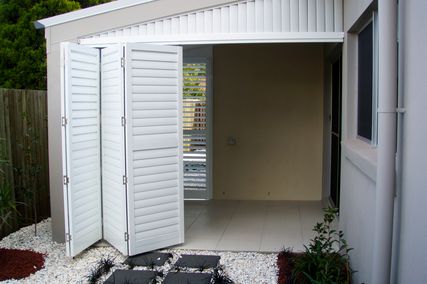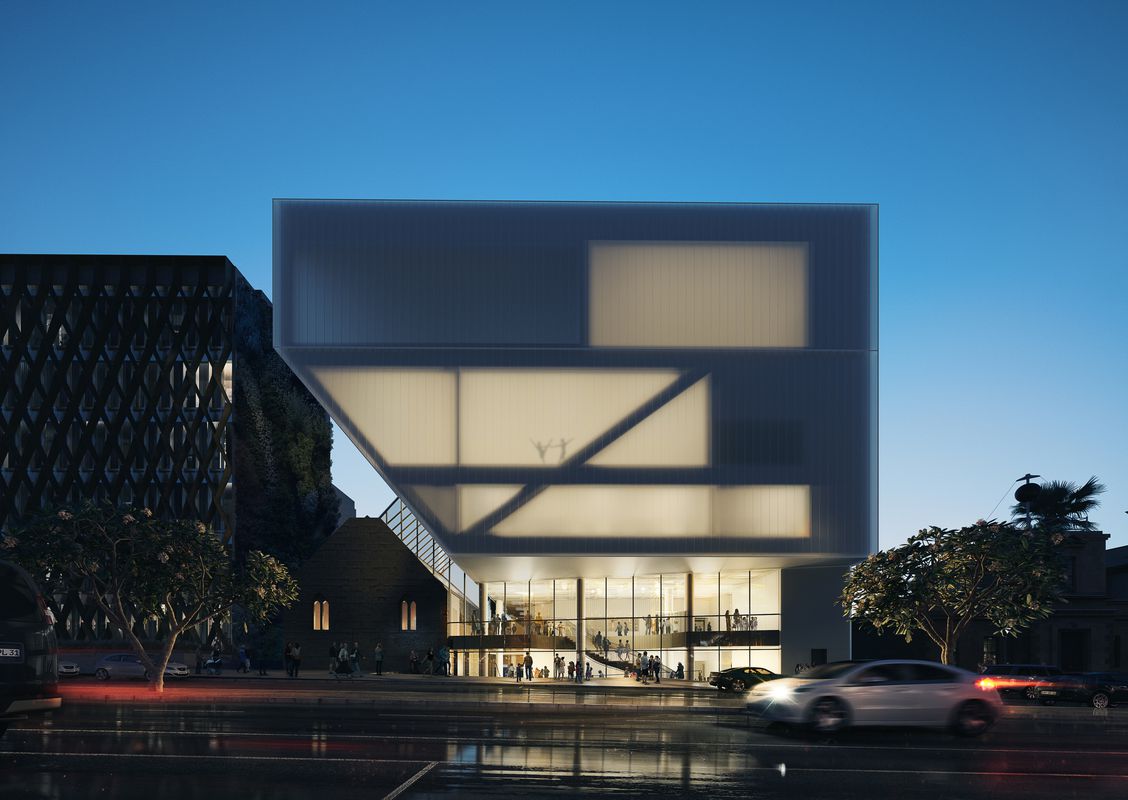The Victorian government has revealed designs for stage two of the Geelong Performing Arts Centre (GPAC) redevelopment in Victoria by Hassell.
The $38.5 million redevelopment includes a new building that will provide a new facade and entrance on Ryrie Street, new rehearsal facilities and dance studios, a two-storey foyer, and provision for creative industries offices.
“A key aspect of the facade – incorporating the elevated dance studios and creative industries – is that it’s active and alive with a translucent and sculptural form providing drama and variance from day to night,” said Mark Loughnan, a principal at Hassell.
The stage two redevelopment follows the stage one refurbishment completed in 2010 – the revamp of GPAC’s 750-seat Playhouse Theatre by Studio 101 Architects, which fronts Little Malop Street. It also follows the completion of the neighbouring Geelong Library and Heritage Centre, designed by ARM Architecture and completed in 2015.
Loughnan said stage two of the redevelopment is an opportunity to further define the arts and cultural precinct within Geelong.
“There was a masterplan undertaken for the wider context [of the Geelong cultural precinct] and stage two is also about creating a new identity and destination for GPAC and for Geelong. The project also provides a new and stronger address and two-storey entry lobby to Ryrie Street,” said Loughnan.
The design for stage two of the Geelong Performing Arts Centre by Hassell.
Image: Courtesy of Hassell
The new foyer will connect the Playhouse Theatre and the Ryrie Street Presbyterian Church, which is currently used as a small performance space. The church will be visible from the Ryrie Street after years of being hidden behind the facade of the current GPAC facilities.
The church will be visibly engaged as part of an integrated new building to Ryrie Street. The new form cantilevers over and reflects the church to present as a civic and unified performing arts centre,” Loughnan said.
The original GPAC building was built in 1981. Loughnan said the redevelopment of GPAC was necessary to accommodate for the growing population of the Geelong region.
“Geelong is evolving and it’s very important that the city is renowned for its creativity, its energy and engagement with the arts. The Geelong Performing Arts Centre and the cultural precinct at large are vital aspects of a diverse city, providing positive effects on the city’s attraction, as well as the community and cultural life of the entire region,” he said.
The redevelopment and expansion of GPAC is part of the Geelong Cultural Precinct Masterplan, which began in 2003. Hassell contributed to the masterplan in 2009.
In August last year, the Victorian government took over planning decisions in the City of Geelong. The redevelopment of GPAC is being delivered by Major Projects Victoria.
Located about 75 kilometres outside of Melbourne, GPAC is Victoria’s only state-owned cultural institution outside of the capital.
Victorian minister for creative industries, Martin Foley, said, “Facilities like GPAC play a vital role in our creative state – they add to the liveability and vibrancy of our cities, attract visitors and investment, inspire people of all ages, and serve as creative community meeting places.”
The construction of stage two is scheduled to start mid-2017 and is slated for completion in late 2018.


















